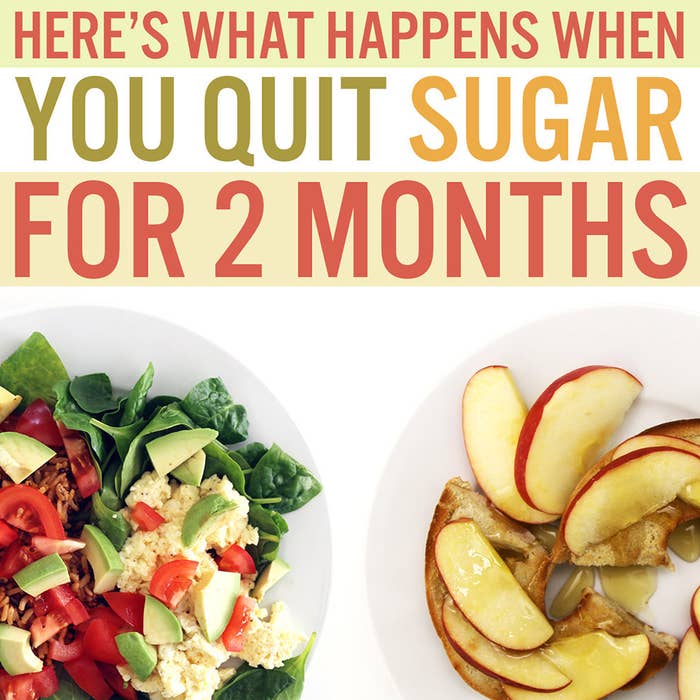
Hi, my name is Chelsey and I have a sweet tooth.
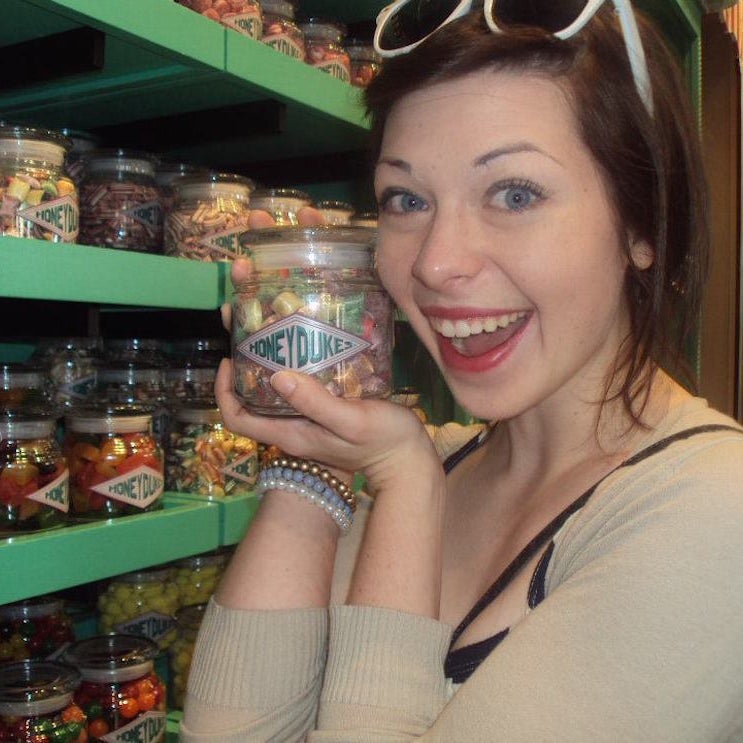
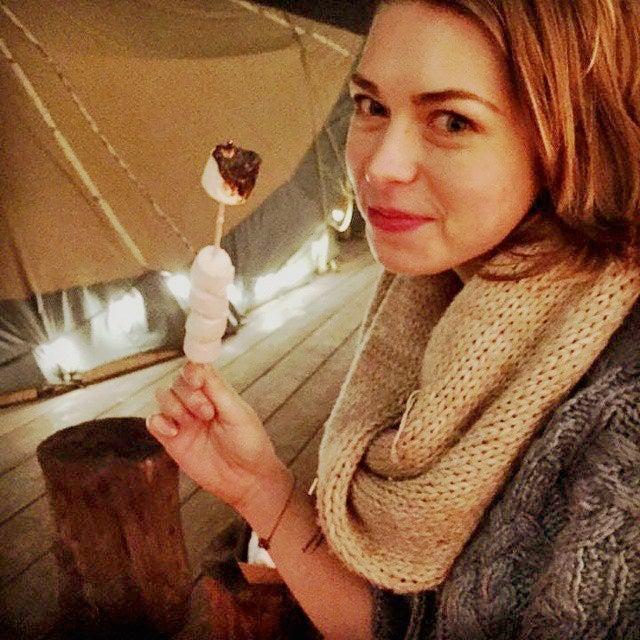
No doubt about it, I am a comfort eater, and the sweet stuff is my biggest weakness. Chocolate, biscuits, crisp and fruity cider, sugary, bready anything, and cinema pick 'n' mix are my Kryptonite, but god, I can never get enough of it.
Don't even get me started on cheesecake.
I know it's bad for me. I know I consume over the daily recommended 50g, and I know that can lead to health problems, tooth decay, and physical discomfort, among other issues. But sugar tastes like the ice cream van jingling down the street of my childhood home, cosying up with a cocoa in the winter, making brownies with old friends. It tastes like the 16 pints of Ben & Jerry's that got my university flatmate and I through a heatwave with no air conditioner, and like the cocktails I was chugging (strike that, delicately sipping) the night I met my other half. It tastes like honest-to-god happiness, and I love it.
It's a problem.
You've probably heard that quitting sugar is the next big thing.
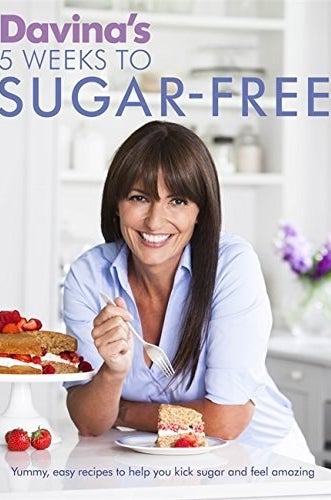

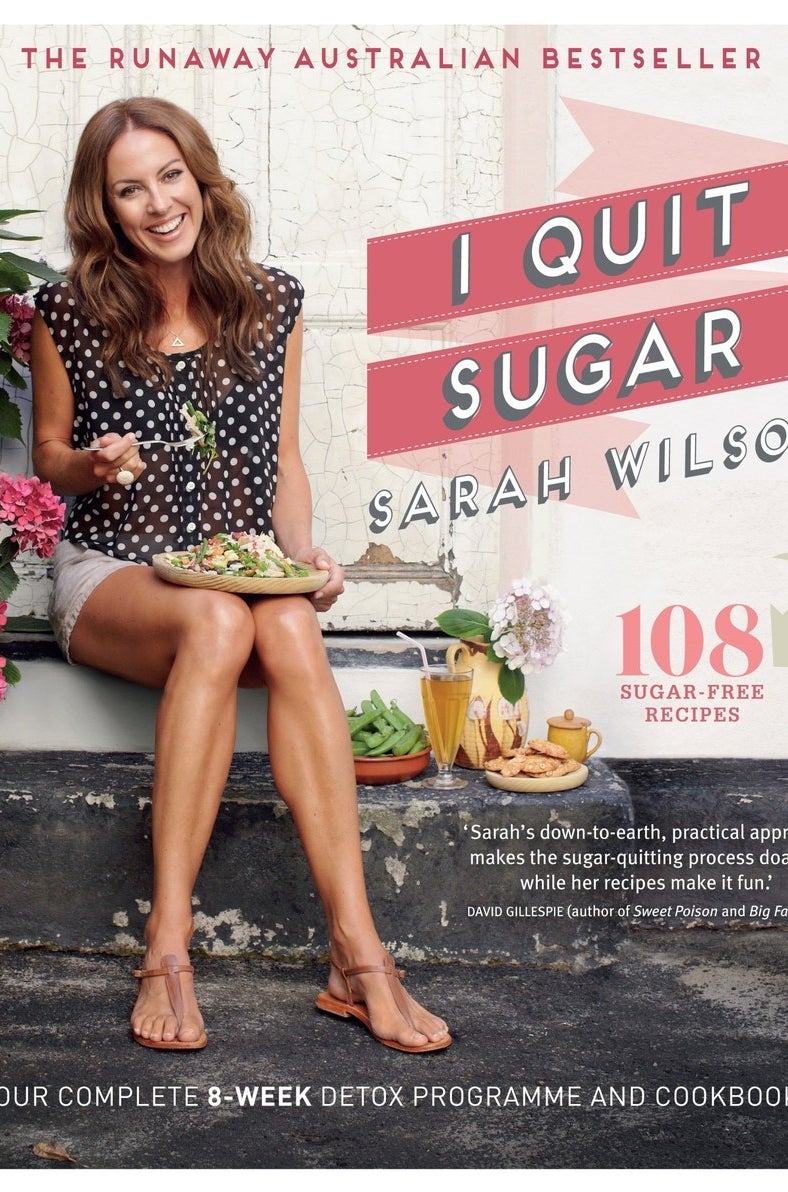
Authors, health food gurus, and bloggers from across the globe have touted the benefits of a sugar-free lifestyle. Popular writer Ella Woodward has been designing recipes that fit a low-to-no-sugar diet for her blog, Deliciously Ella, for years, while TV personalities and foodies Davina McCall and Sarah Wilson are two of the highest-profile proponents of incredibly low sugar diets, and each offers books designed to kill a sugar "addiction".
I was interested in trying the fad out for myself and writing about it seemed like the perfect motivator. If I know anything about myself, it's that it takes a deadline and other people's expectations and money to get me round to getting anything done. So if I was ever going to kick the sugar monkey off my back, committing to it for work was just about the only surefire way to make it happen.
I decided to try my luck with the eight-week programme designed by Wilson, former editor of Cosmopolitan magazine and self-professed sugar addict.
I chose the EIGHT-WEEK plan over the five-week plan. 🙏 🙏 🙏
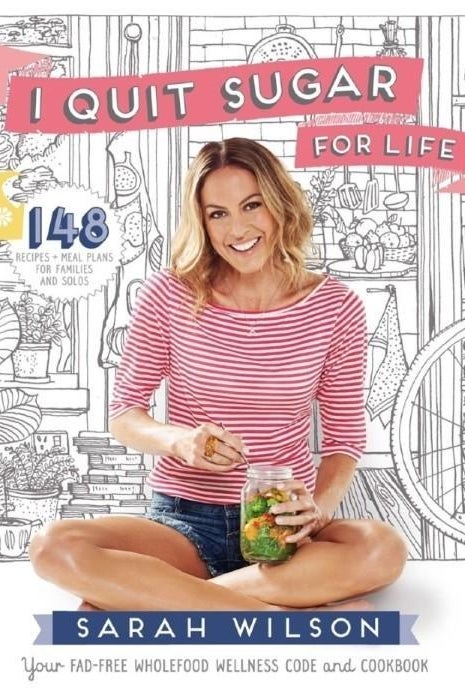
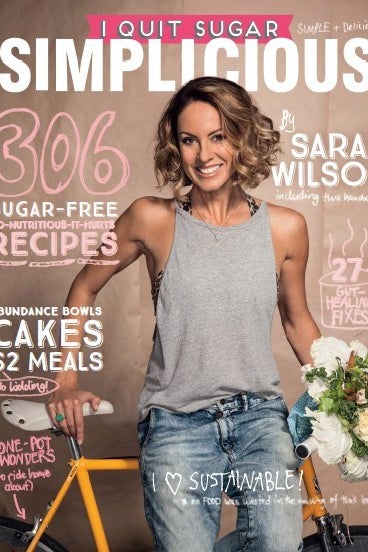
A seasoned food writer and experienced chef, Wilson is the author of 10 print and digital books on the subject of living sugar free. I Quit Sugar and its follow-ups, along with her online I Quit Sugar 8-Week Program have helped her grow a fledgling health food empire, turning over $1.8 million (AUD) annually. This all sounded legit enough to me, not to mention her programme was more focused on health and happiness than "the perfect body" vibe that McCall's five-week approach took. She also has pretty good hair.
Her plan is designed to wean dieters off sugar completely over eight weeks, and then to reintroduce naturally occurring sugars from fruits and veg as the programme comes to an end. The plan relies on cutting out sources of fructose and sucrose, and ensuring that dieters are consuming the lowest possible threshold of naturally occurring sugars, at 3-6 grams per 100g. That's relatively in keeping with the NHS's standards on what constitutes "low sugar."
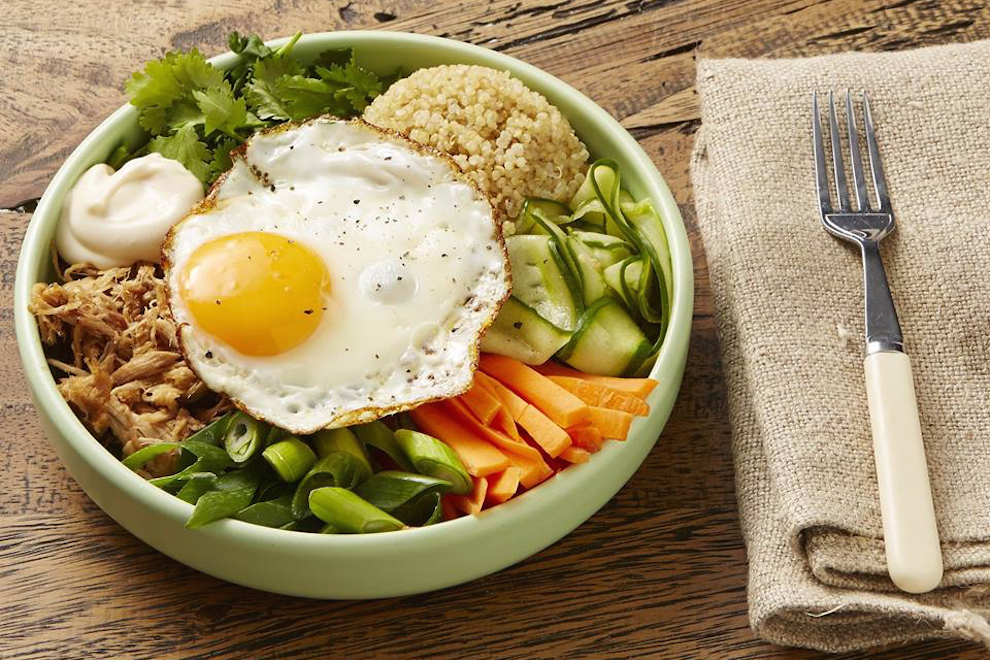
Wilson invites dieters to follow along with the original eight-week programme laid out in her book, or to subscribe to a more step-by-step online community for $150 (AUD). Her book includes a page or two on how to move forward and what kinds of sugar to eliminate each week, and 108 recipes. The online programme offers exclusive recipes, more variety for vegetarians, vegans, and food allergies, plus helpful weekly shopping lists and meal plans.
I opted out of the online programme, because part of my goal in cutting sugar was to see if it was realistic for my budget. Shelling out £70 (the equivalent of $150 AUD), on top of the £10 book and cost of food seemed extravagant. I wanted to know if it was possible to make this life change without an unreasonable investment. Since Wilson's online programme is based on her book, I felt like I should be able to figure it out for myself and be more on target money-wise by doing so.
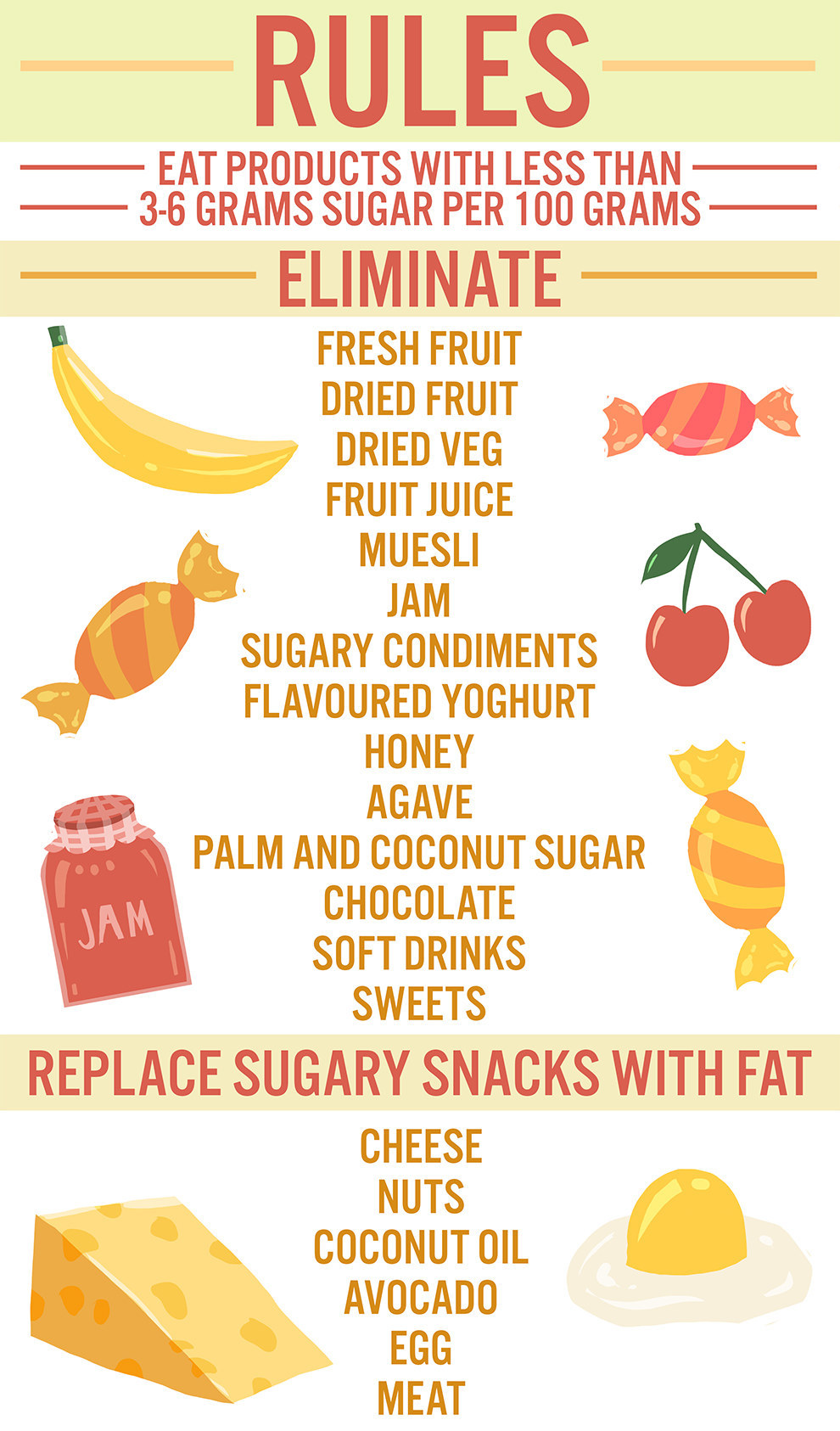
These rules are pretty strict, and definitely not feasible or advisable for the long term. In fact, while Wilson suggests in I Quit Sugar that we greatly overconsume fruit and sugary veg, my sources from the NHS and British Dietetic Association (BDA) say the average person has no reason to be concerned over the natural sugar that occurs in fruit and veg. Rather, hitting your five a day and beyond is a good thing. The NHS guide to sugar in our diets goes on to note that "sugars also occur naturally in foods such as fresh fruit and milk, but we don't need to cut down on these types of sugars." The NHS doesn't have a clear limit on how much sugar in total we should consume daily, but focuses on added sugars rather than those that naturally occur in fruits, grains, and dairy, suggesting that added sugars should make up 5% of our daily calories.
Some caveats:
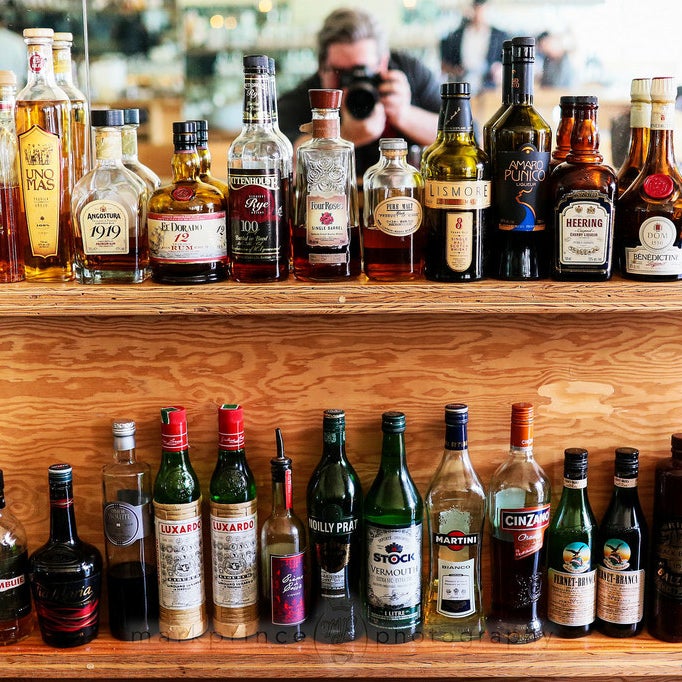

Grains:
Sugar also occurs naturally in grains, even complex carbs like brown bread and whole grain pasta (both IQS-approved). I Quit Sugar contains a number of Paleo recipes that cut down on carbohydrates that our bodies naturally convert to sugar; meat plays a big role in many of the suggested recipes, but to make matters more complicated for myself – I don't eat meat! As a vegetarian, I was going to have to get clever and make a few grain and legume substitutions for meat, not to mention get really cosy with eggs, to make the diet work. But since Wilson's diet never actually says you need to be cutting back on grains, and since I wasn't looking for a weight loss plan, this seemed well within the parameters.
Besides, as BDA-registered nutritionist and dietician Anna Daniels of Honest Nutrition told me, cutting out the carbohydrates just isn't good for you. "Fruit, vegetables, dairy, and nuts all contain sugar, and avoiding all of these foods isn't healthy and doesn't leave you with much else to eat! We use carbohydrates for energy and the sugars in fruits and vegetables also provide much-needed vitamins and minerals."
Booze:
Why I decided the summertime was a good time to cut out refreshing, sugary treats is beyond me. I'm still baffled that I committed without realising I wouldn't be able to have a lolly on a hot day (so many things taste better than sugar-free feels, let me tell you that right now), and even more so that I didn't wonder in advance how I was supposed to endure a summer sans cider and Pimm's.
The I Quit Sugar diet doesn't expressly forbid a pint now and then, but it does outlaw the sugary, properly thirst-quenching stuff. While it's not mentioned anywhere in her book, Wilson's website FAQ allows for some moderate drinking, as long as it's dry wine, spirits and soda water, or beer. That may sound almost too good to be true, but Daniels confirmed it for me, saying, "Drinking a glass of dry wine with dinner contains very little sugar and also some nutrients, and is perfectly fine in moderation. Beer also contains very little sugar (2.2g/100g, and lager has only trace amounts) so consumed in moderation beer would be low in sugar anyway." Wilson warns that these are high in calories, but again, I'm not watching my weight, so ¯\_(ツ)_/¯

I wanted to know what benefits I would actually experience on this diet.
In I Quit Sugar, Wilson suggests that previous alumni of her programme have experienced:
Weight loss
More energy
Reduced bloating
Management of autoimmune disease
Fewer sugar cravings
Increased focus
Decreased risk of heart and liver disease, and cancer
Additionally, clearer skin and better sleep aren't mentioned by Wilson, but are often touted as benefits of a low sugar diet.
A lot of these claims are quite serious, and if you're suffering from any kind of disease, or have been told by a doctor you have high risk of one, you should consult with a professional before you set out on any diet in an attempt to ease symptoms and risk. At 25, I'm quite healthy minus a twingy back, an occasional eczema flare-up (which, alas, I'm not relying on sugar's "better skin" promise to solve), and an allergy to people who ride their bicycles on the sidewalk. So tracking many of these claims wasn't going to be in my scope and should be left up to medical professionals to decide anyway.
When it comes to weight loss, while it is a noted benefit of low sugar diets, I decided not to track these results (again, see a doctor before you start a weight loss regime). I'm 5 foot 6 inches and 63kg, well within healthy BMI parameters. I was more interested in seeing how my lifestyle would change, how that would make me feel, and how sustainable cutting sugar out really is. I decided to focus on tracking the benefits I felt the diet might conceivably have on my day-to-day lifestyle.
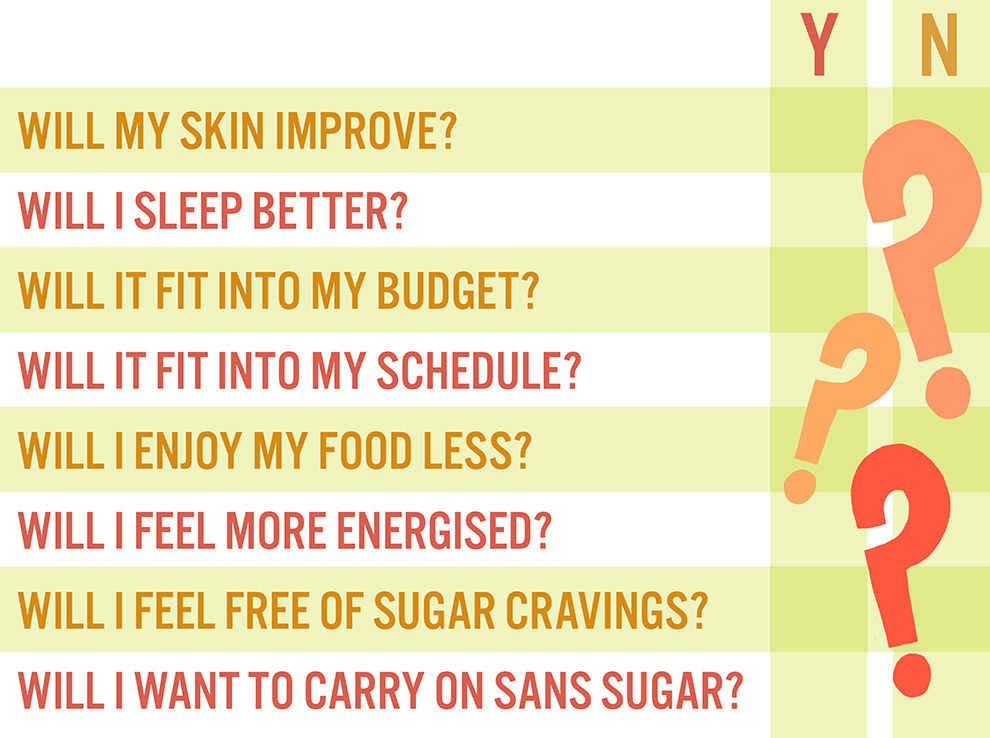

In preparation for my sugar "detox", I made a visit to BDA certified London-based nutritionist Laura Clark of LEC Nutrition. I set up a consultation with Laura to go over my plan, and check in for any advice she had to keep me healthy during the two-month sugar-free stretch. She wasn't familiar with Wilson and her method, and she was skeptical. After I gave her the bullet points of the diet, the first thing she told me was that it's essentially impossible to cut out sugar in the way Wilson and other sugar-free proponents imply.
What followed was a mini biology lesson, diagrams and all, to illustrate for me that even following Wilson's diet to the letter wouldn't necessarily mean that I would actually reduce the sugar in my system. When it comes down to it, Laura explained, "quitting sugar" is a pretty misleading idea, since even foods we don't associate with sugar, like complex carbs, still contain long chains of sugar molecules that are converted to simple sugars during digestion. Laura's advice was that sugar is a fuel, and that the amount we consume should be relative to the amount of fuel our bodies need. Eating less added sugar is always a good rule of thumb, but a diet should focus less on exclusion and more on a balance of carbs, protein, veg, and fruits, which all include naturally occurring sugars that we shouldn't be afraid of including in a balanced diet.
My chat with Laura gave me the chance to reevaluate my mindset and end goal. What I wanted was to work my way into a more balanced diet, and I needed to keep in mind that naturally occurring sugar is PART of that diet, Even while on a "sugar detox" and focussing on eating whole foods, some sugars would continue to be part of my diet; that's OK, and even good.
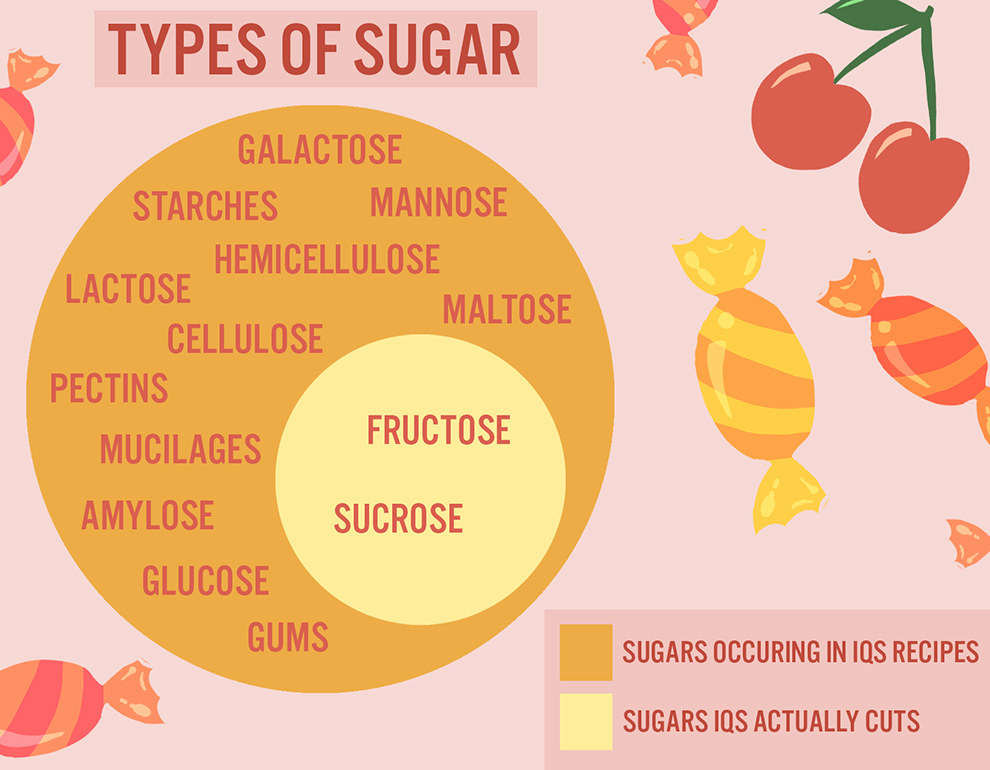
Then, I went shopping.
When you quit sugar, the first thing you detox is your kitchen pantry and fridge.
Following the advice in the back of I Quit Sugar, plus a list compiled from studying the recipes in the book, I gave my pantry a little makeover to make it sugar-free friendly and get me set up with all the dry goods I would need over the coming weeks. Dairy and other perishables I would work into my weekly grocery budget as time went on.
This little redesign was the most expensive bit of the whole process, setting me back £110, not counting the new Tupperware and storage I bought to keep it all fresh and easily accessible, or the high-powered blender that's pretty much a necessity when you've got to prepare every aspect of a meal yourself to avoid sneaky added sugar.
The expense was steep, and I was already worrying about how the diet might negatively affect my budget. My partner and I were typically spending a fairly frugal (for London) £45-60 per week on our groceries for the two of us, and to shell out over a hundred on a pantry redesign was shocking, but I hoped it would be a worthwhile investment and set me up comfortably to start my new, sugar-free lifestyle.
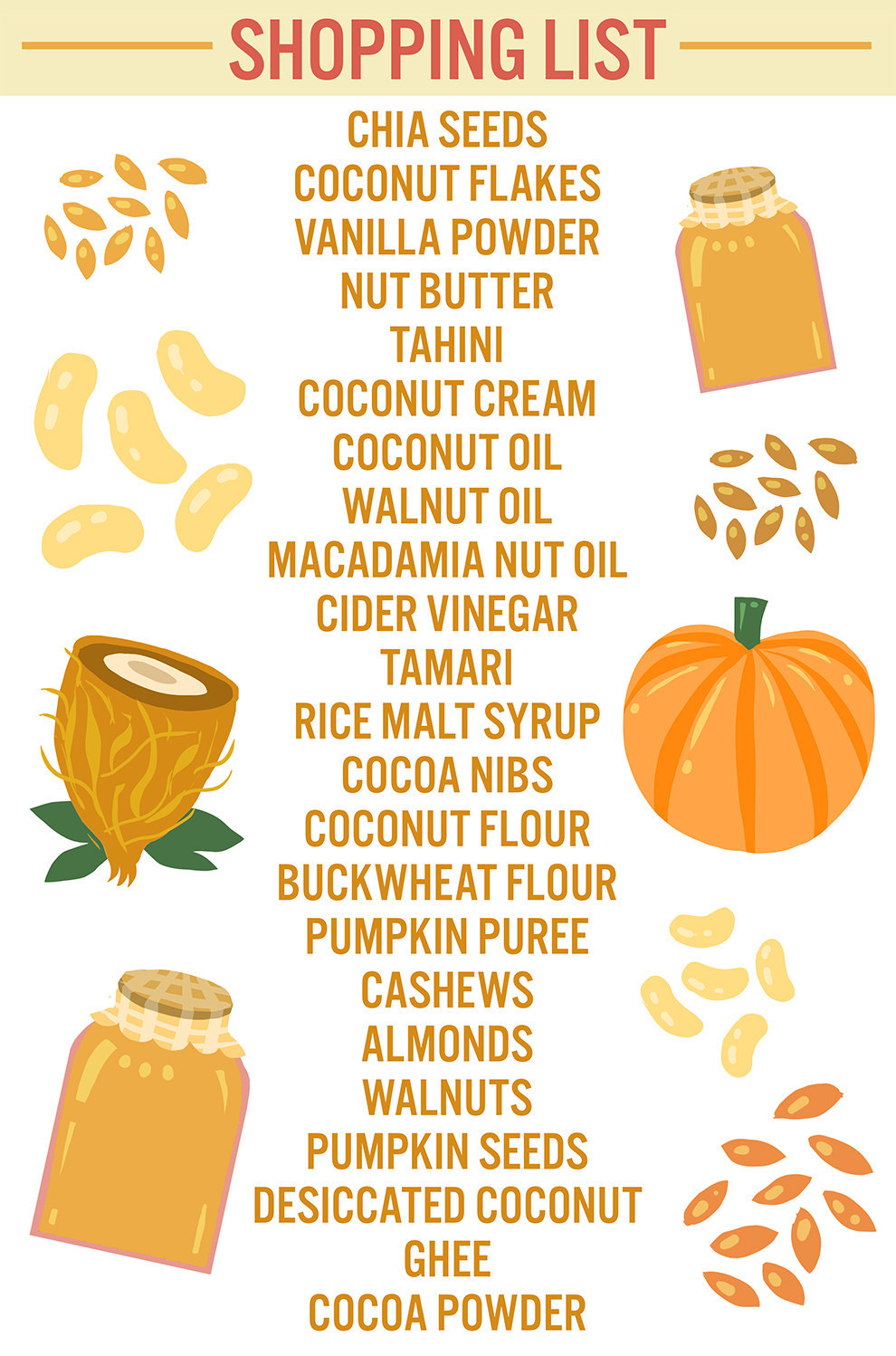
And then...I dived in.
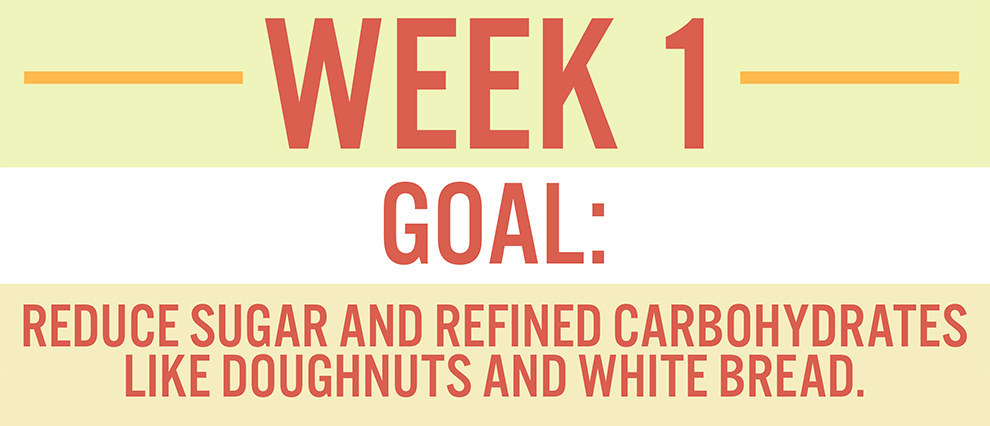
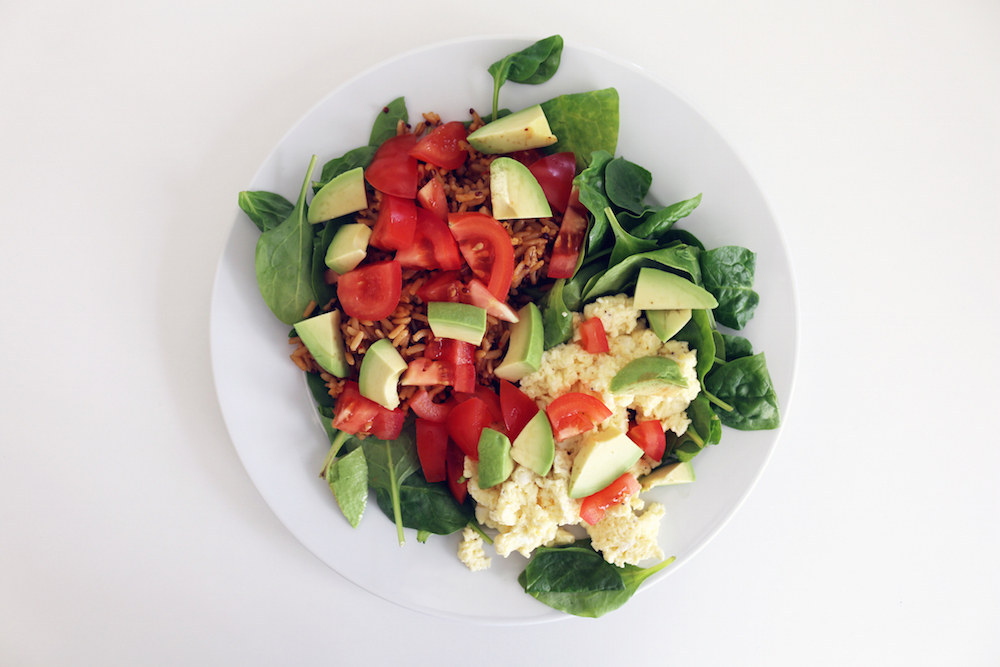
What I ate:
Poached eggs and avocado on toast, greek yoghurt and homemade granola from I Quit Sugar, sweet potatoes, falafel from I Quit Sugar, salad, and lots of eggs!
"The first week is about a few easy, simple changes that aren't too detailed or complicated," says Wilson in regards to starting out on the plan. She makes some simple suggestions about what to start swapping out right away (avocado for jam, popcorn for sweets at the cinema, halve the sugar in my coffee, replace sodas with the diet version), and I was pretty surprised to realise that I was already doing most of these things.
I tried Wilson's suggestion to fry up apple slices and halloumi as a sweet snack alternative early on in the week. It was A+++, but didn't really fit into my hopes that the diet would be practical. Because let's face it, halloumi is expensive and it's not like you can whip out a frying pan in the office when you're craving a little something sweet.
I did run into a little roadblock when I went to London's Field Day festival – I already know festival food is a picky eater's nightmare because you just NEVER know what's in there! So after moderately sipping beer throughout the afternoon, I went for a nice vegan rendang that turned out to taste like candy. I ended up trading with my boyfriend for his veggie poutine, but that had to be a counterproductive health move, right?
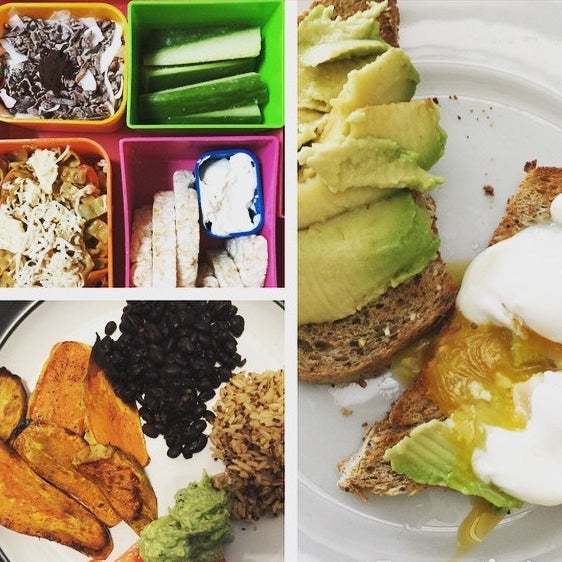
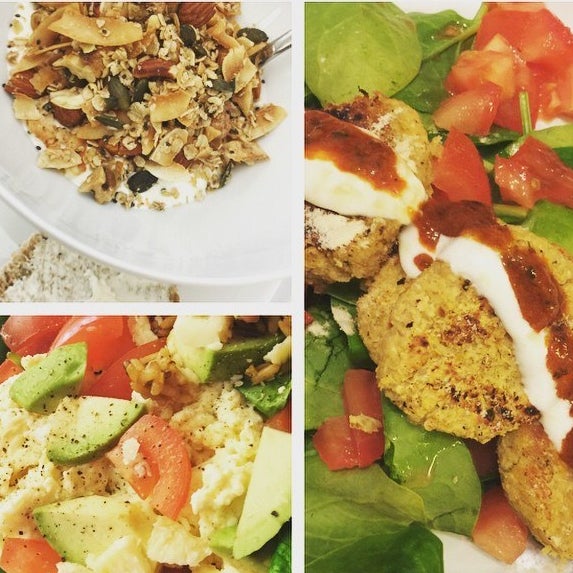
How I felt:
On the night before I started cutting sugar, I tracked my sleep using the iOS app Sleep Bot on my phone. It records your movements and sounds and gives you a basic overview of how your sleep went. I had a little bit of a cold, but according to the app I slept deeply for 8 hours and 12 minutes, and I woke up feeling as rested as I could with a stuffy nose and sore throat, so to be honest, I wasn't looking for much improvement there. Still, I kind of secretly hoped that cutting sugar would bring me to a whole new level of awakeness and restfulness I could never even have imagined before. It seemed to work for Wilson, so I figured it was worth crossing my fingers for.
In general, it was annoying, yet surprisingly easy to avoid the chocolate bar slump (I expect this has something to do with the sense of accountability I felt, since I was doing this For Journalism).
I recorded some cravings, but nothing unmanageable. My skin remained in the same mild combination condition it always was over the course of the week, and everything stayed pretty much the same, except that now most of my conversations revolved around The Experiment, a trend which would keep up over the full eight weeks.
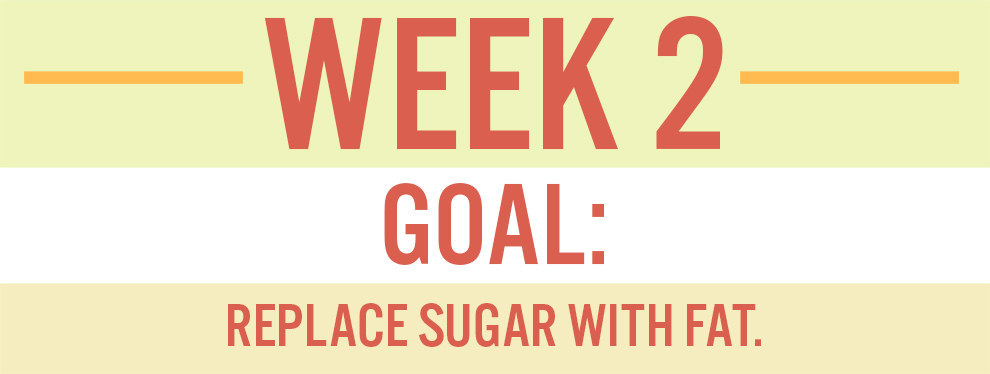
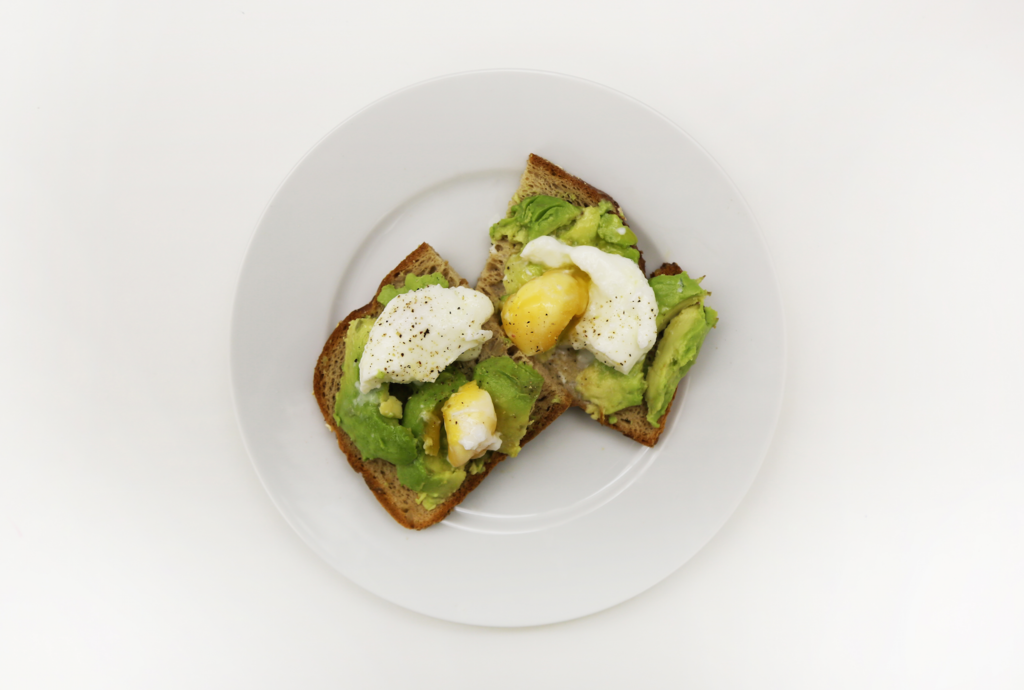
What I ate:
So much cheese! Pasta, sweet potatoes, eggs, avocados, yoghurt, quinoa, and gnocchi, oh my.
Week Two was delicious. Probably because the aim of Week Two is to eat a lot of cheese and nuts (and meat, but no meat for me, of course). Wilson says eating "wholesome, unprocessed fats and quality protein like eggs, cheese, nuts, and coconuts" is the best weapon against cravings, even though when I spoke to Anna Daniels about nutrition, she warned that "nuts still contain sugar (peanuts 6.2g total sugar in 100g." That meant the thing I was supposed to be using to curb my sugar cravings was actually marginally over the limit of sugar per serving (3-6 grams per 100 max) as prescribed by The Rules.
I cooked mostly out of Wilson's second book, I Quit Sugar For Life, in which recipes have some trusty icons to let me know if they were safe for the eight-week programme or not. Her sweet Fennel Tarte Tatin isn't (it uses rice malt syrup to sweeten, but I wasn't on schedule to introduce "safe" sugar alternatives yet), but she lists a savoury alternative that I tweaked a little further, and boom, delicious. A little time-consuming, a little expensive (fennel, goat cheese, puff pastry, and macadamia nuts add up fast!), but seriously tasty.
The other highlight of my menu for Week Two was I Quit Sugar For Life's Greek "Longevity" Soufiko. It may have a questionable name (Longevity is a bit of mumbo-jumbo to me), and Wilson suggests using "lashings" of olive oil, but still it was on target taste-wise, and had the added plus of being made up of stuff that's always on my grocery list (veg and olive oil), so in other words, it was really cheap and simple, even with the addition of some chickpeas for ~protein~.
I supplemented the rest of the week with my own, cheaper staples. It turns out most of the lunches and dinners I eat regularly were already pretty close to sugar free, as long as I swapped soy sauce for tamari in stir fry, steered clear of carrots, mixed my own dressings and pasta sauces, and avoided ketchup and my favourite chipotle barbecue sauce. It sounds harder than it was, I promise.

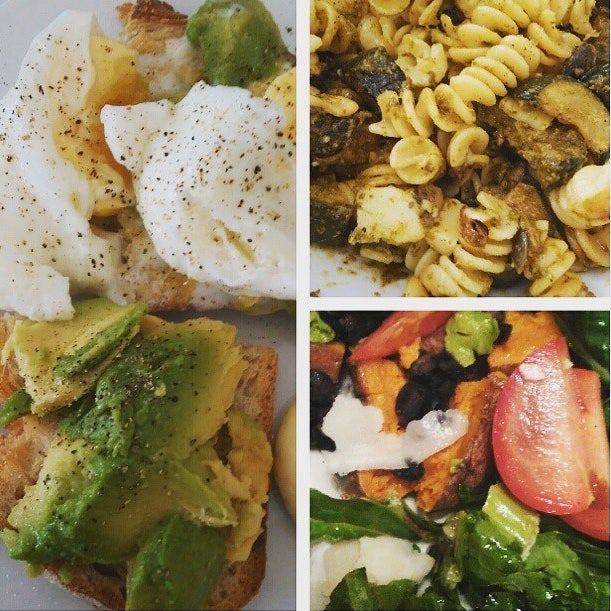
How I felt:
Week One left me feeling confident and Week Two's yummy menu kept my spirits up and everything was dandy. I enjoyed trying out new recipes, and I was feeling healthier if just for the fact that I was finding myself able to turn down doughnuts, cakes, and chocolate bars, and refraining from guzzling them down with Coke. I was still craving, most notably in the afternoon and evening, and during any moment of boredom or stress.
The most frustrating thing was social drinking – my drink is a nice pint of cider, and the sweeter the better. Never a beer drinker, I was feeling trapped and frustrated at the pub, like I couldn't enjoy myself fully buying a drink I didn't really want. I like a nice glass of wine, but even so, it started to seem like a chore to *have* to order one when I just wanted to let my hair down and relax. Resisting relaxing weekend treats was another issue, so I was working hard to keep myself busy lest a moment of idleness drive me toward the chocolate. But, surprise, it's possible to over-snack and make unhealthy food choices even when you're cutting sugar. Replacing a bag of Sour Patch with two handfuls of nuts doesn't really cut it, but since I was technically following The Rules, I sometimes did that anyway.
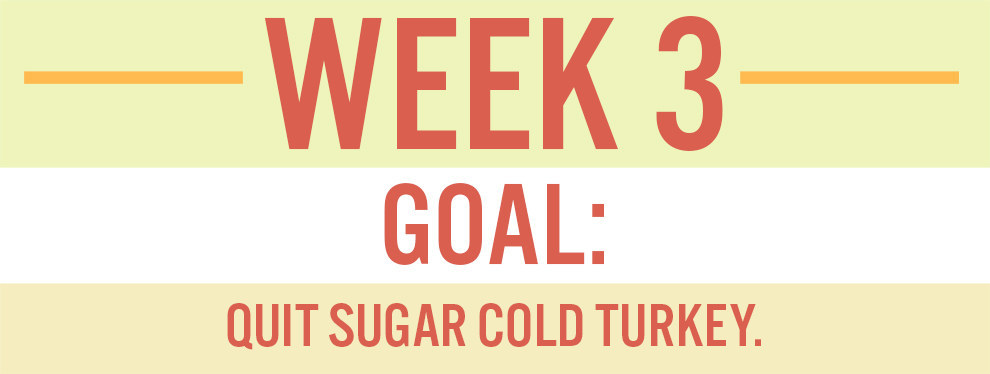
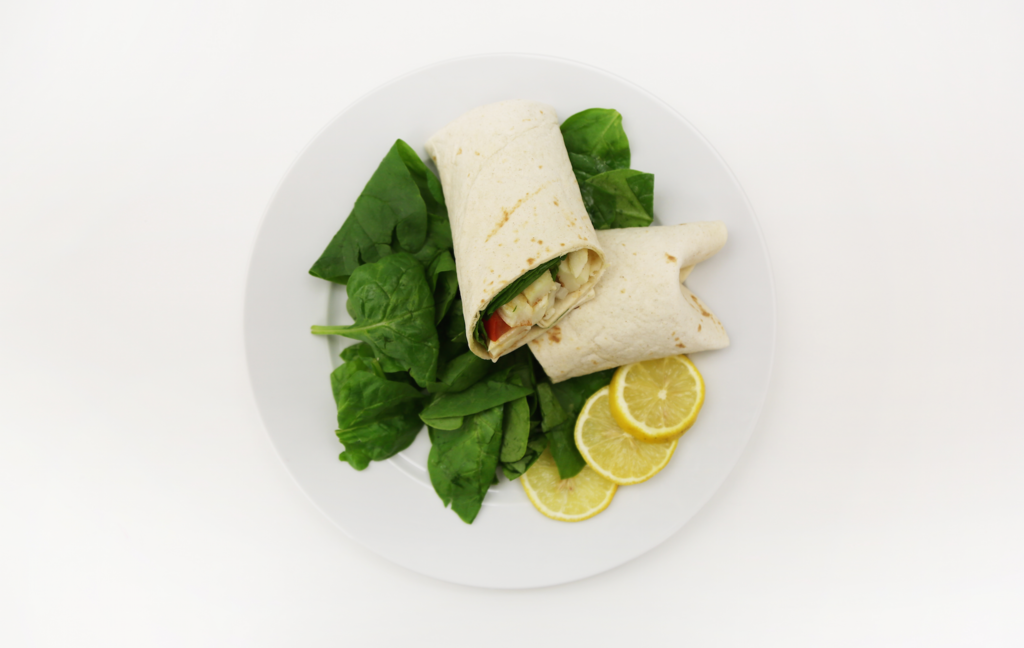
What I ate:
Halloumi, flatbread pizzas, scrambled eggs, salad, sweet potatoes, and a ton of cheese!
I started to stray from Sarah Wilson's cook books in Week Three, after a pretty disastrous trial of her Spinach and Fennel Smoothie (I hate green drinks, sorry), and gravitated toward whole food bloggers instead. I tried out a sweet potato bowl from Minimalist Baker that would definitely become a favourite (I ditched the maple syrup and it was still delicious!). I kept the week creatively sugar free with some homemade pizza sans tomato sauce on flatbread, and whipped up a warming mug of hot cocoa using raw cocoa powder and coconut cream.
I lived on grilled cheese while attending the British Summer Time festival, alternated between yoghurt and avocado with microwave-poached egg toast for breakfast, and all seemed fine. But then, the moment I'd been waiting for – and probably the moment you clicked in for... I CHEATED! Totally by accident, but still, turns out a bag of veg crisps from Pret was well over my sugar limit! Baked beetroot and carrot technically factor into the "no dried fruit or veg" rule, and it totally went right over my head. I was already halfway through, and I was hungry and on the move, damnit! I took a deep breath; Wilson says lapses happen and just to let it go and "keep your intention on track".
I survived, it was fine.
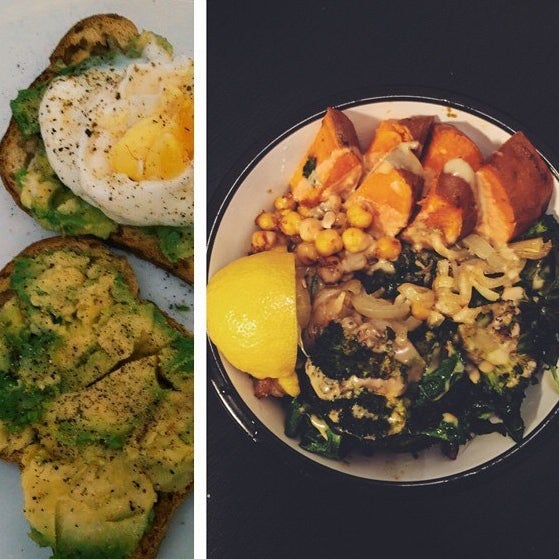

How I felt:
Despite the crisp fiasco, I felt like I was really hitting my stride in Week Three. I was sleeping well; I felt chipper. I wasn't noticing any major changes in focus or energy, but I wasn't bogged down by afternoon sugar cravings or slumps, which helped.
Doing my grocery shopping for Week Three, I realised I'd already done most of the appetising and affordable veggie options on Wilson's menu in the first two weeks.
I was pretty disappointed, and felt a little bit cheated and a lot of regret that I hadn't signed up for her eight-week programme as a vegetarian, which would have meant I could be spoon-fed a daily meal plan. But then I realised that if only about eight of her book recipes are affordable, I probably would have found myself even more frustrated on the subscription, because even if the recipes were plentiful, the funds definitely would not be.
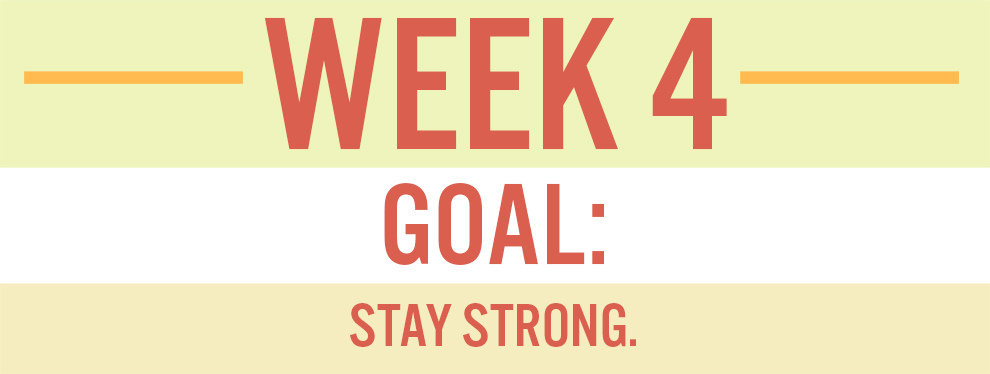
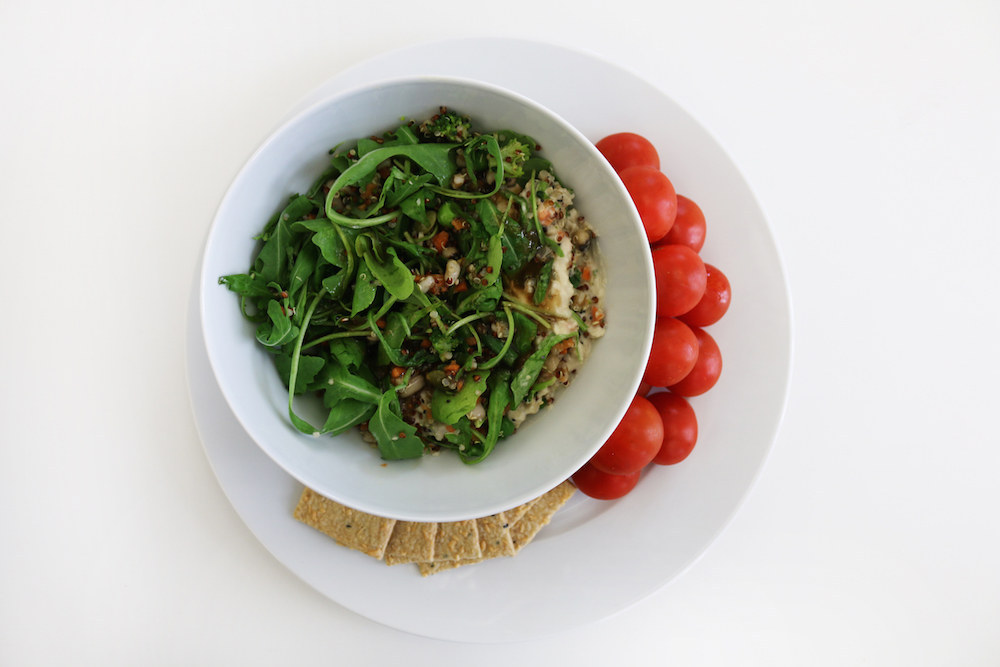
What I ate:
Salad, stir fry, eggs and toast, gnocchi, yoghurt, soup, and a load of courgette.
I followed two separate recipes consisting mainly of courgette during Week Four. I love courgette, so this was fine by me, but my attempt at these fritters went south. The batter stuck to my frying pan, so I figured I'd turn it into patties and bake it instead, which made for a weird, omelettey mush that didn't really do anything for me, leaving me a bit grumpy and unsatisfied.
Wilson's Courgette Cheesecake was a better deal, even if the name was really misleading. It's a casserole dish, not remotely a "cheesecake", and even though it's listed as a breakfast option, I didn't have time to make a casserole for breakfast. So I had a nice breakfast-for-dinner night instead. The super-cheesy dish was damn delicious, and I ended up having the leftovers for breakfast the next day, and will 100% make it again – for special occasions, though, because I had to buy so much extra cheese to make it.
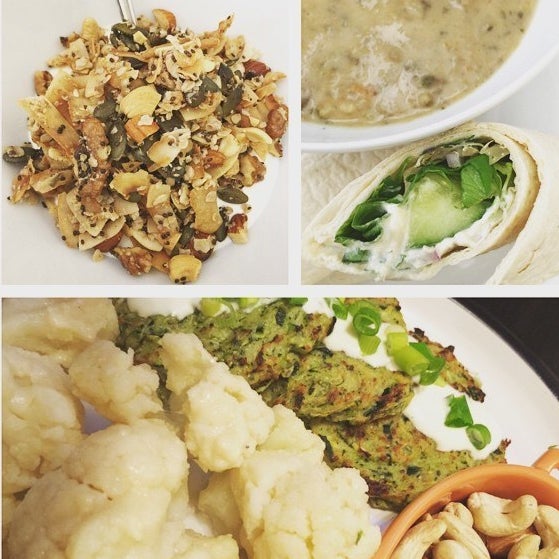

How I felt:
My sleep was pretty unaffected, ranging from seven to eight hours per night, my mood and energy levels remained consistent, though about halfway through this week my colleagues report I had a ~cranky~ day (sorry).
I was still struggling with enjoying going out and having a drink, and I was starting to feel a little bit trapped in my food choices, but I was moving onwards and upwards. I wasn't having intense cravings, but at the same time, I was experiencing the frustration of not being able to have something when I wanted it.
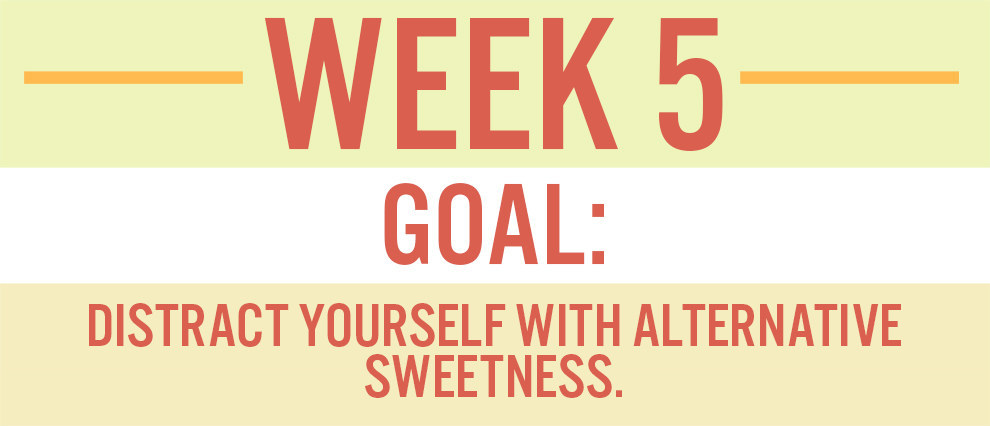
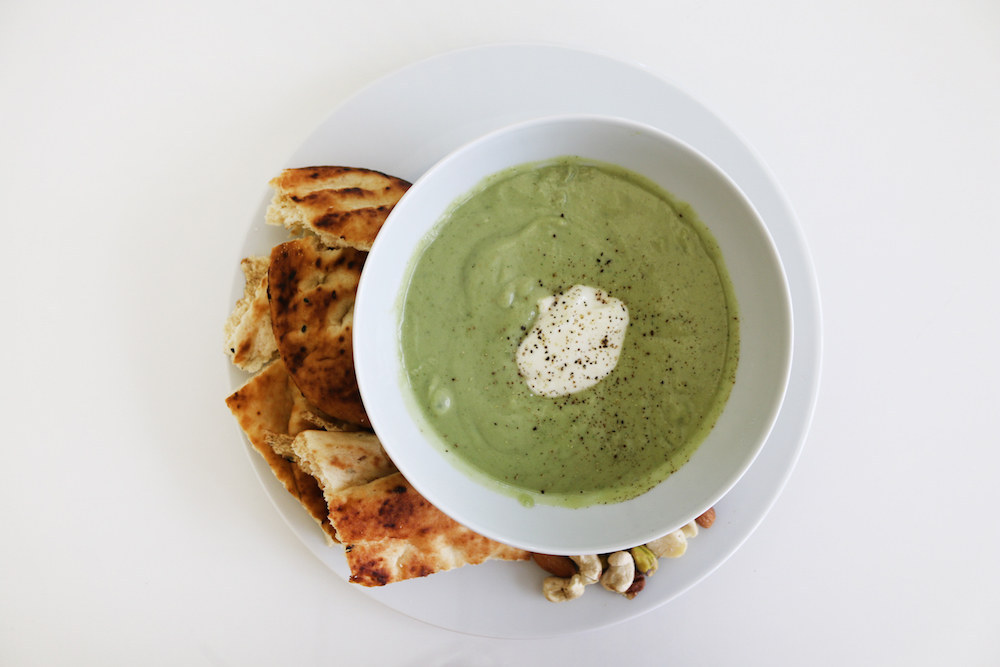
What I ate:
Gnocchi, red beans and rice, savoury crepes, veggie schnitzel, sweet potatoes, and so much avocado.
I'd worked myself into a pretty good eating routine by Week Five, sticking to a high protein diet and lots of healthy fats to curb afternoon empty feelings. I was relying on peanut butter and rice cake snacks for a rich treat (rather than a spoonful of coconut oil like Wilson suggests – sorry but NO THANKS). I was getting comfortable and instinctive when it came to what I could and couldn't eat. I started experimenting with the foods I knew I could eat and enjoy.
I followed some of Wilson's recipes, including her Cooling Avocado Soup (cold soup freaks me out! But I added coconut milk and yoghurt, and it turned out surprisingly good), and I was even brave enough to try green smoothie number two, Wilson's "Sweet Green Meal in a Tumbler," which called for GRAPEFRUIT – sweet, glorious fruit. Maybe I'd just been deprived of fruit for too long, but the quarter of grapefruit required actually made this watercress (yes, watercress) smoothie the most delightful thing in the world.
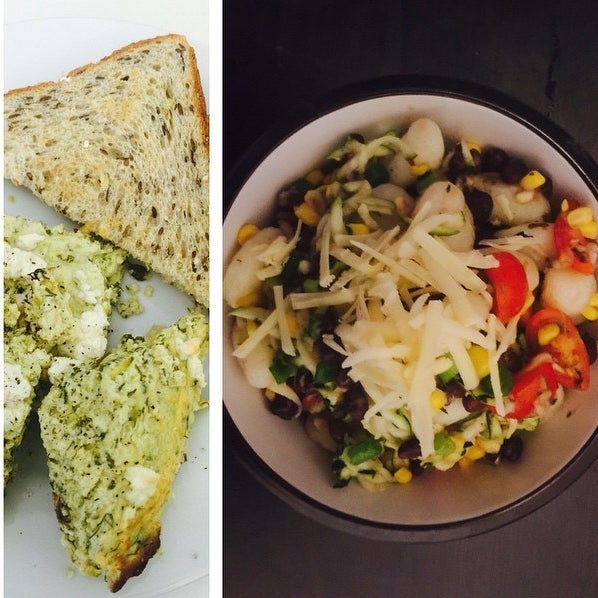
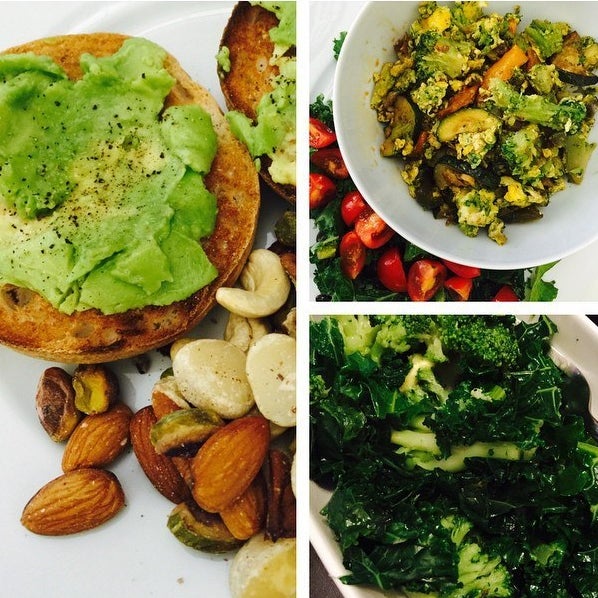
How I felt:
Thank GOD for that grapefruit because I might have been a pretty miserable wreck without it. By Week Five, I was really missing natural sweetness. I was annoyed by having to turn down office sweets and treats, but my genuine cravings were all for fruit.
This week's goal was some mumbo-jumbo about distracting yourself with "alternative sweetness". Take a bubble bath when a craving hits, says Wilson, or focus on breathing and enjoying the fresh air instead of letting cravings rule your thoughts. But let me be very honest. Apple > bubble bath, at least when you're very expressly forbidden to eat an apple. Just ask Adam and Eve.
I could feel myself starting to get irritable and exasperated with the programme – the most noticeable benefit so far had been a bigger appreciation for fruit, and I still couldn't have any. But I held it together and pretended my Babybels were slices of banana, because Week Six would be all about reintroducing some actual sweet stuff, and MY BODY WAS READY.
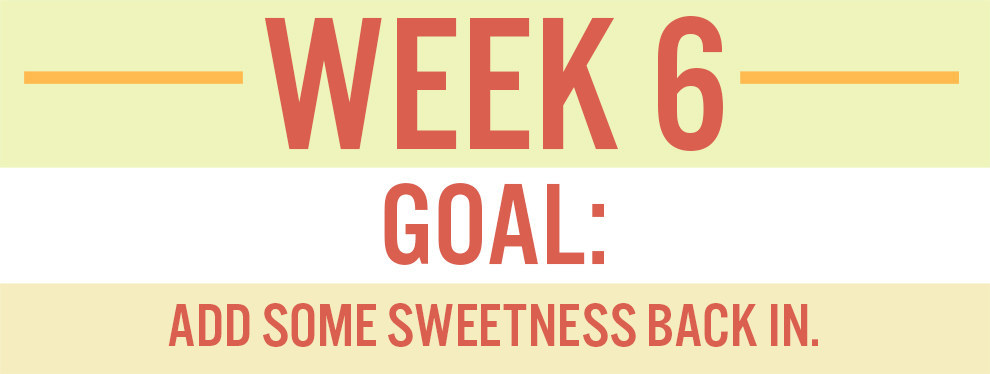
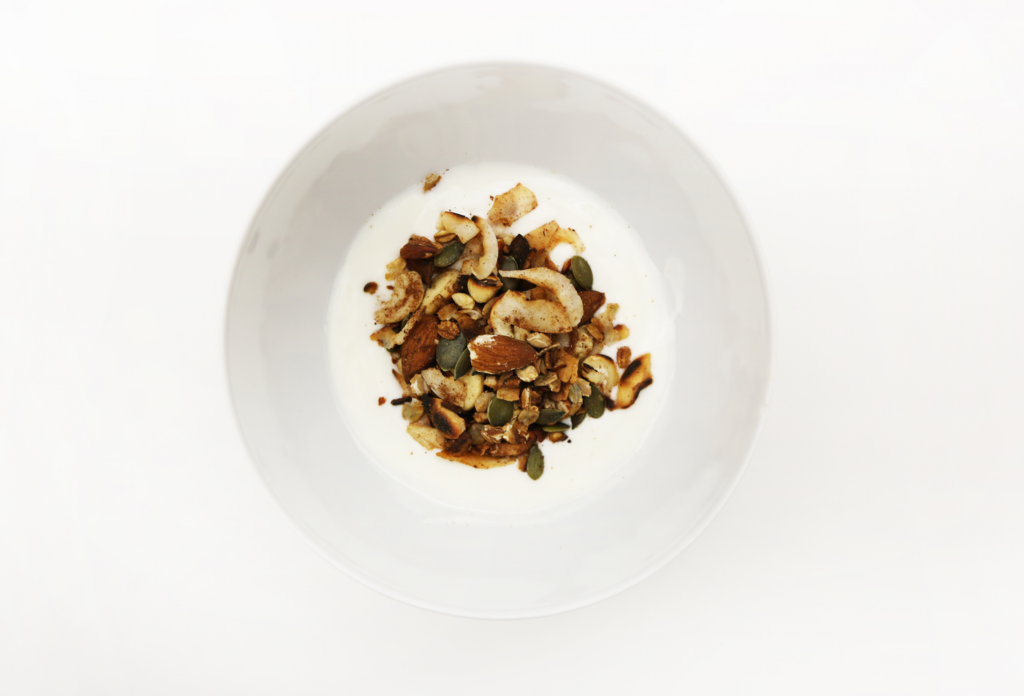
What I ate:
Stir fry, avocado, eggs, black bean wraps, RASPBERRIES, and.... ACTUAL cheesecake.
I was so heavily anticipating Week Six that I prepared for it early. The night before the week's official start, I whipped together the ingredients for the Crunchy-Nut Cheesecake (the real stuff, not the breakfast casserole Wilson PARADED as cheesecake in an earlier chapter), so that I could have it the next day.
That cheesecake was seriously good, but all together it cost at least triple the price of a sugary store-bought cheesecake, and was so rich I could only eat a slice. I ended up bringing the rest to work to share. Sharing's all well and good, but when you only get to eat £2 worth of a £20 cake you waited six weeks to enjoy, something's NOT RIGHT.
In the same week, I tried out Wilson's Raspberry Ripple, which wasn't terrible, but wasn't great. The recipe calls for a mixture of cocoa powder, salted butter, coconut oil, and a very small handful of raspberries to be frozen, then broken up like a chocolate bar. The oily consistency of the frozen butter and oil was weird to say the least, and there weren't nearly enough raspberries for every bite.
Moral of the story? Dessert should have sugar. It's worth it.
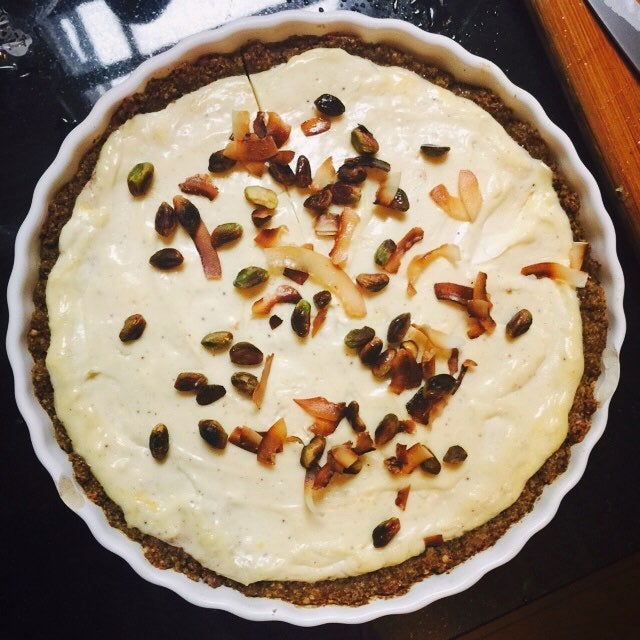
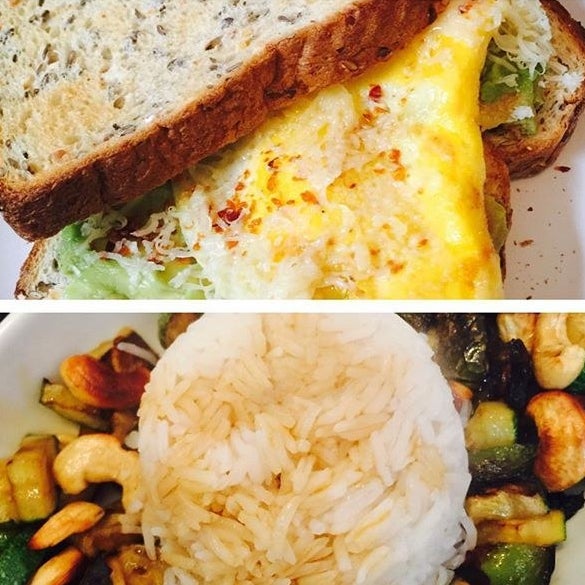
How I felt:
Week Six was glorious in the sense that I felt rewarded for holding off and getting to really enjoy dessert, but I won't lie and say I didn't feel cheated because dessert wasn't as awe-inspiring as I'd hoped. Still, the "so close, but so far" nature of my almost-sweets didn't result in a ream of cravings for proper chocolate as I suspected, so I'll call that success.
In other areas, my skin had remained the same, my sleep was consistent, still ranging from seven to eight hours, and I WAS feeling less bogged down by a need for sweet treats. My budget, on the other hand, was hurting. When it came to making my weekly plans, I had been relatively smart with my purchases and found my weekly grocery bill upped by only £5-10 on average, but throwing in the one-time use stuff (aka a million pre-shelled pistachios, pints of cream cheese, and enough ground nuts for the crust) to make a sugar-free dessert taste sweet set me back closer to £25-30 extra, and I was feeling the sting of that for sure.
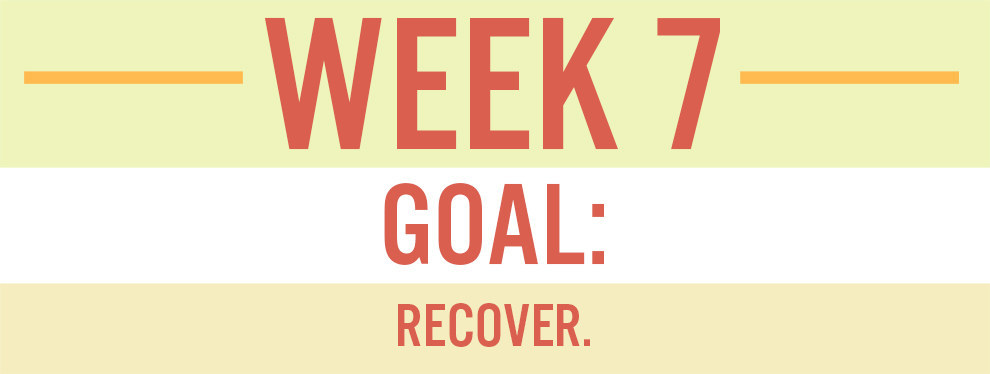

What I ate:
Quiche, falafel, salads, stir fry, tortellini, avocados, and pancakes!
In Week Seven, I carried on experimenting with "safe" sweeteners. According to Wilson these were primarily rice malt syrup and stevia. I drizzled rice malt syrup on my pancakes after caramelising some apples to go on top, and though Wilson suggested topping it all off with powdered stevia, that stuff is hard to find and hard to afford when you do find it. Rice malt syrup is pretty flavourless, and if not for the syrupy texture I needed to complete my breakfast, the pancakes would have tasted just as sweet with the apples and melted butter alone.
Funnily enough, in Week Seven, so close to the end, I had my first real issue with a restaurant menu. I'd been out to eat a handful of times throughout the programme, or picked something up on the go, and always found at least one very obviously sugar-free option I was happy to eat. But when I hit Banana Tree before a night at the ballet, it finally happened. A limited vegetarian menu to start left me with three or four options, all stir fries and curries. The curries were all sweeter options, so would definitely contain palm sugar and beyond, and since I had swapped out soy sauce for the less sweetened tamari, I was worried that the available dishes would use soy sauce at the least, and likely thicker, more syrupy sauces on top.
I explained my situation to the waitress and requested that I take my meal without the sauce, but she told me that wasn't possible. But a girl's got to eat, so I gritted my teeth and ordered the best option I could. It turned out fine: The stir fry didn't taste too sweet the way that vegan rendang in my first week had, and I felt pretty confident that this little lapse in my second-to-last week wasn't too big of a failure. Besides, in her introduction to Week Eight, Wilson says this kind of thing happens. "It's not really lapsing," she says. "It's continuing the experiment."
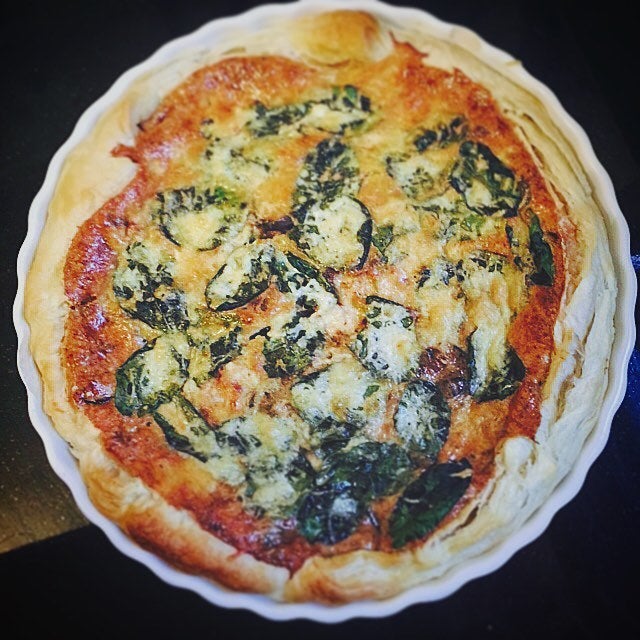

How I felt:
Week Seven was exciting AF – I knew I was getting closer to the end, and the rules were getting more lax.
I got to lighten up and throw some fruit in with my breakfast, which was amazing, but it also made me really eager to open the fruit floodgates and throw some other, proper sweetness back into my diet.
Physically, I was feeling the same as usual, but I could feel the frustration of still having to limit myself, particularly when it came to healthy options, and there was a real sense of irritation after the Banana Tree Incident. A choice that I normally would have been happy with, one that was rich with veggies, well-balanced, and well-portioned had me wracked with guilt over the possibility of soy sauce. I could feel the rules really getting to me, and I was ready to start following my own.
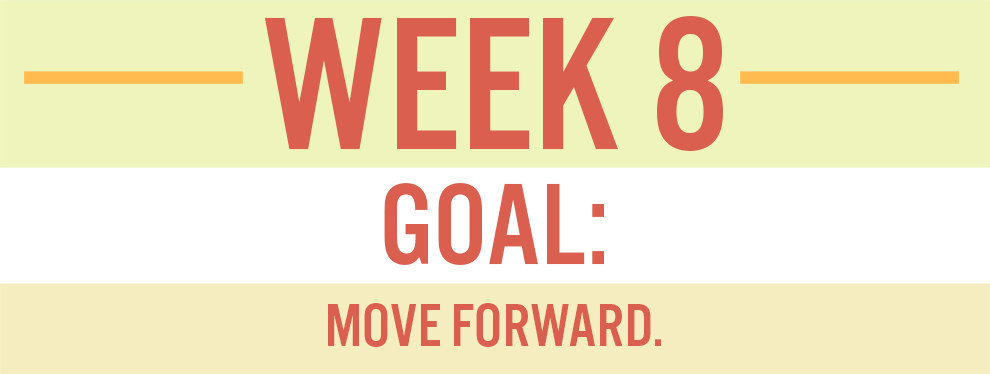
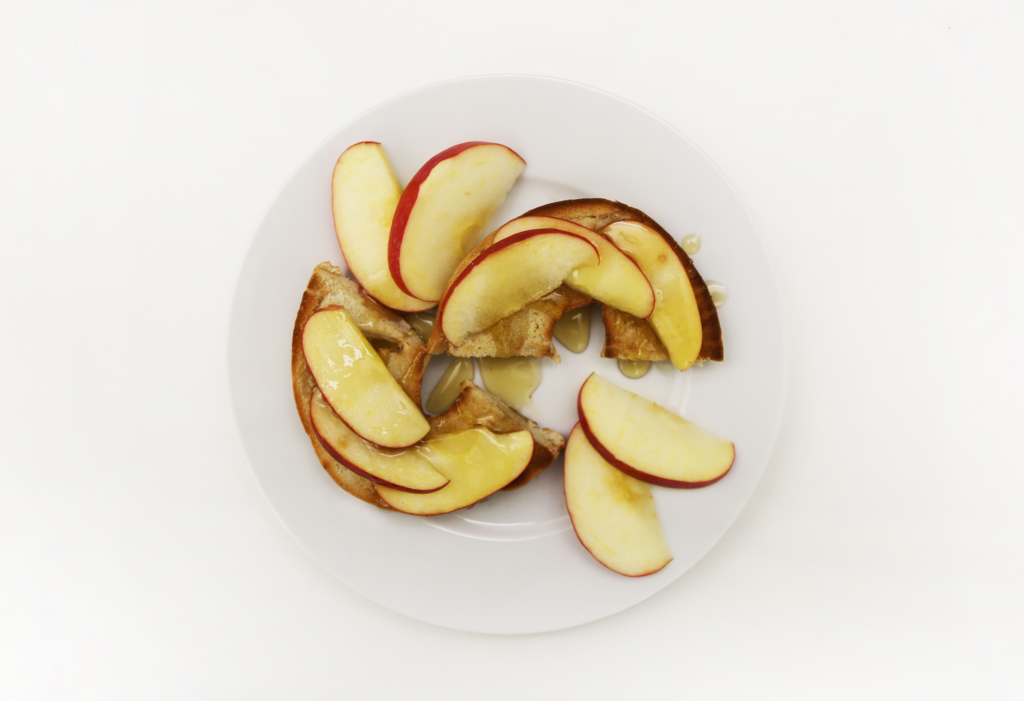
What I ate:
Sweet potatoes, stir fry, eggs, clementines, rhubarb, banana, and apples.
For me, Week Eight was about finding a balance and having as much fruit as I wanted. I pretty much abandoned the recipes in Wilson's books at this point, and was just keeping mindful of what I was tossing into my own recipes.
I ate a lot of fruit in Week Eight, but looking back, what felt like a lot was still only barely bringing me up to meet my five a day.
I ended up with a killer banana, rhubarb, and oat smoothie that didn't need an ounce of added sugar, tons of fresh veg-based meals, and plenty of fruit to guide me back to The Land of Sugar and Honey.
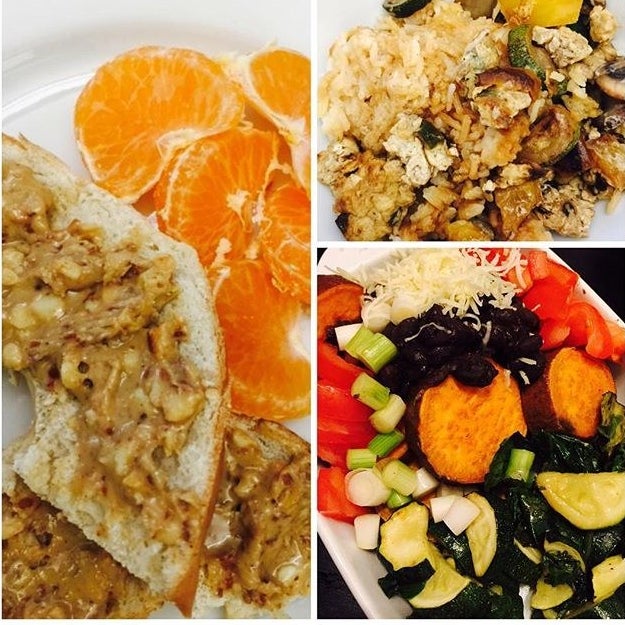

How I felt:
As Week Eight came to a close, I felt ready. I was feeling good, and relatively healthy, but I couldn't say that a lot had changed since day one, so I was looking forward to expanding my horizons back into sweeter territory.
On my last night of the 8-Week Program, I slept for 7 hours and 7 minutes, which was consistent with the entirety of the programme, but also with my sleeping habits before I ever cut sugar out. My skin didn't show any major changes over the eight weeks, and for the most part I was feeling like my old self, but admittedly without the baggage of *needing* that afternoon chocolate fix, which was, I'll admit it, pretty freeing.

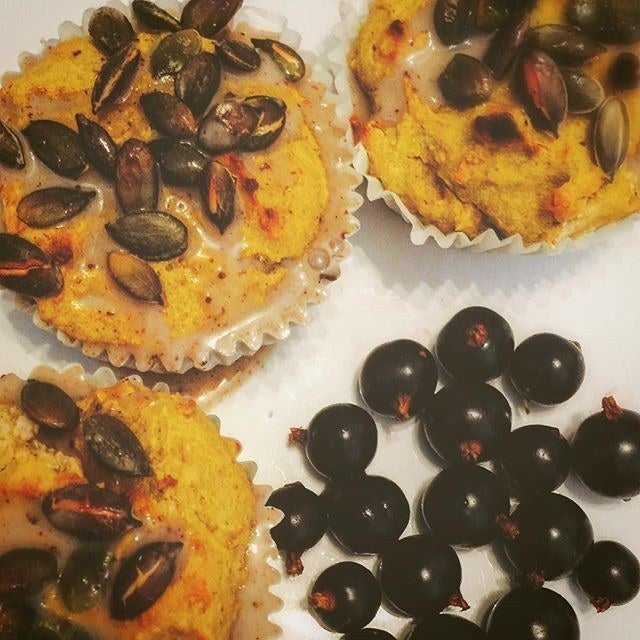

When I woke up on the start of Week Nine – strike that, I was just back to regular, untitled weeks from now on – I felt a tiny bit of pressure to really enjoy my first day back on sugar. Because I was going back. I wasn't going to suffer through a permanent lifestyle change that would have me pining for a cider at the pub or a sweet breakfast forever. If I'd learned anything over the eight weeks, it was that setting boundaries, being aware of what goes into your food, and knowing alternatives to cure an afternoon energy slump are all really great tools. But not being able to treat yourself is a really great bore.
In her remarks on Week Eight, Sarah Wilson notes that she didn't even think about or miss sugar by the end of eight weeks of cutting it out. Sorry, Sarah, I disagree. I missed it. I missed the option, I missed the sweetness of life that is so often associated with the sweetness of taste – a summery cocktail under the sun, an ice cream cone in the park, a spongy birthday cake; and the lacklustre results of cutting out all sugar made it hard for me to defend a life of never again scooping raw cookie dough out of the mixing bowl. I couldn't live like that, I didn't want to live like that, sorry.
So I woke up and made myself some muffins with brown sugar, honey and all, enjoyed a few delightful cocktails and my favourite cider, and I called it a day. I didn't go overboard. I had what I wanted, but I didn't rush to the grocery store and scoop all the pick 'n' mix into my shopping cart, so let's call that a win.
Over the following week, as I readjusted to a less stringent diet, I found that everything did sort of balance itself out. I was happy eating my homemade, sugar-free granola (Sarah's greatest gift to me, I think), I wasn't craving chocolate at ALL, which was completely bizarre, but has made keeping that afternoon snack more nutrient-rich a pretty easy transition. I was more sensitive to sweetness and the short term effects of sugar. Two weeks off the diet, I drank seven, count 'em, seven Rekorderlig ciders and had no buzz to show for it, but instead a massive headache I can only chalk up to the inordinate amount of sugar used to flavour those things.
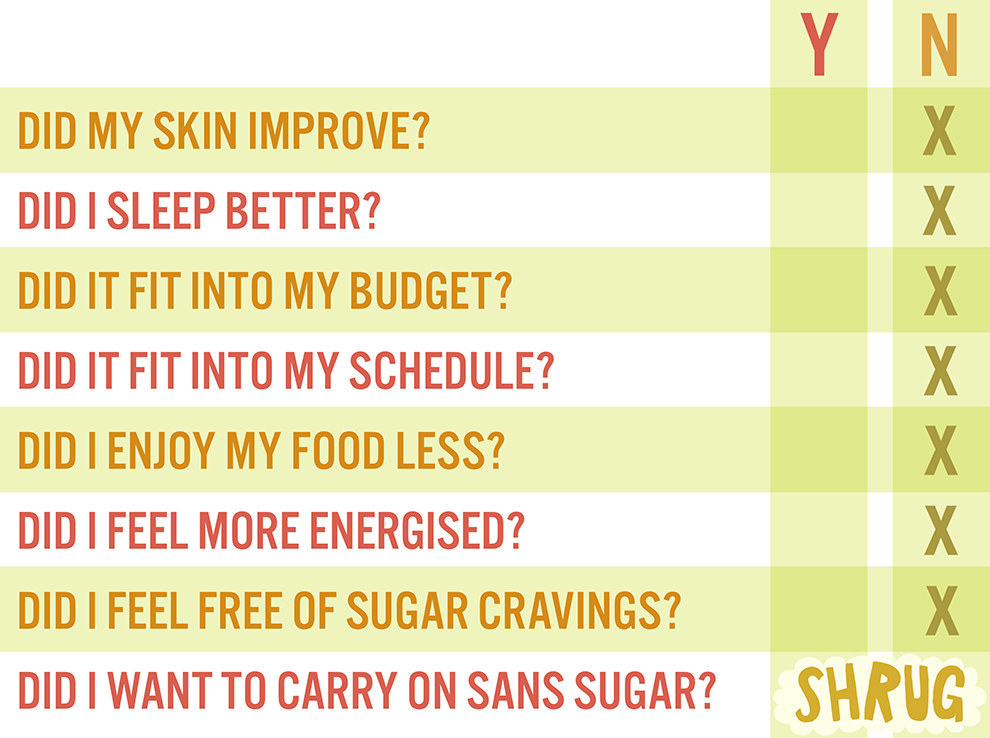
In the end, cutting out sugar's not for me, and probably not for most people who haven't been instructed by a doctor to do it. The claims of Wilson's book didn't really come through for me (just in case you're curious, my weight stayed exactly the same throughout), and I found that following her recipes was too time consuming and expensive.
Still, following the programme helped me find a balance in what I eat. To know what I miss and don't miss, and to focus more on using food to fuel myself on a daily basis, while better appreciating treats.
I've followed a gem of advice from Anna Daniels more than anything I learned from Wilson in the aftermath of the program: "Cutting down on processed foods and drinks that contain 'added' sugars, which are empty in nutrients, and focusing on not over-consuming carbohydrate portions would be a better way of improving your overall health and wellbeing."
I've kept this simple, flexible, but golden rule in mind as I continue to re-evaluate my eating and shopping habits to work best for me. I've found ways to work more whole foods into my diet on my budget, but I've done away with following specific recipes and using substitutions that are overpriced or just not worth the time or lack of taste.
My main hope with this experiment was that somehow, magically, I wouldn't crave sugar anymore. That I'd come out the other side as a person who has a green smoothie for dessert and LOVES it.
I am not that person. I'm still a person who loves the way ice cream tingles on my tongue in the heat, and the way a really delicious baked good makes me feel warm and comfy from the inside out. I'm still a cider and dessert wine kind of girl.
And that's OK.